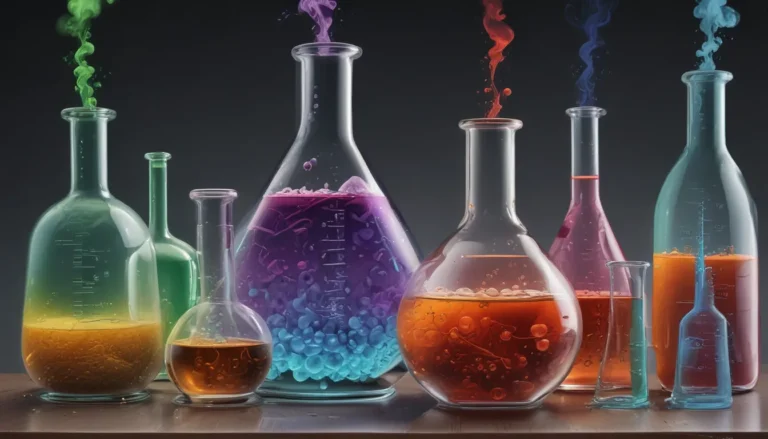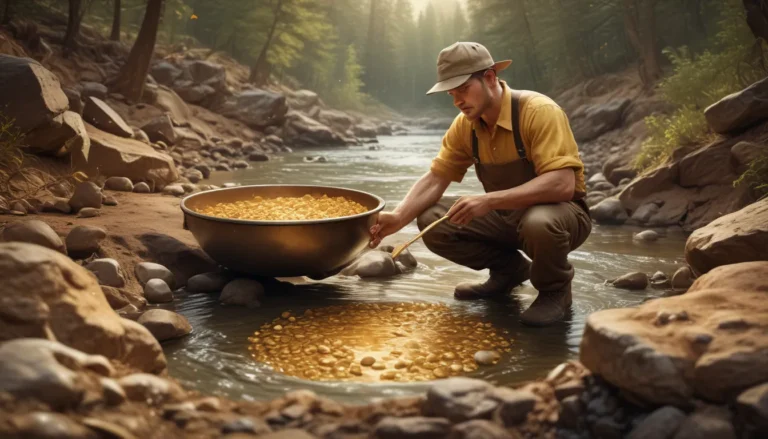A Note About Images: The images used in our articles are for illustration purposes only and may not exactly match the content. They are meant to engage readers, but the text should be relied upon for accurate information.
Welcome to the captivating world of primary structure, where molecules unveil their secrets through the arrangement of atoms and bonds. In this article, we will journey through 12 extraordinary facts about primary structure, shedding light on its significance in deciphering the intricate web of chemical interactions and biological processes. So, grab your lab coat and microscope as we delve into the fundamental concept of primary structure that shapes the foundation of molecules.
Unraveling the Essence of Primary Structure
The primary structure of a molecule serves as its backbone, dictating its shape, function, and overall behavior. From proteins to nucleic acids, the primary structure holds valuable information about the composition and properties of various compounds. It is like a secret code that determines the unique characteristics of molecules, guiding their role in biological systems and chemical reactions.
The Sequence of Amino Acids: A Blueprint for Proteins
At the core of primary structure lies the sequence of amino acids in proteins. This specific order, encoded by the DNA sequence of the gene, defines the primary structure of the protein. Each amino acid acts as a building block, joining together to form a polypeptide chain that shapes the protein’s function and structure.
Deciphering Protein Function: The Influence of Primary Structure
The unique sequence of amino acids in a protein’s primary structure plays a pivotal role in determining its function. Even slight alterations in the sequence can lead to significant changes in the protein’s shape and behavior. Just like detectives unraveling a puzzle, scientists use the primary structure to unlock the mysteries of protein evolution and classification, uncovering the secrets hidden within their sequences.
Peeking into the Mechanisms of Primary Structure
Let’s explore the intricate mechanisms that revolve around primary structure, shedding light on how it influences the properties and behavior of molecules.
The Backbone of Proteins: Peptide Bonds
Peptide bonds serve as the glue that holds together the primary structure of proteins. Formed between adjacent amino acids in the protein chain through condensation reactions, these bonds create the backbone of the polypeptide, providing stability and structure to the protein molecule.
Mutations and Modifications: Shaping the Primary Structure
Mutations in the DNA sequence can lead to alterations in the primary structure of proteins, potentially causing genetic disorders or changes in protein function. Furthermore, post-translational modifications such as phosphorylation and glycosylation can modify the primary structure, influencing protein function and regulation.
Influence on Protein Stability and Folding
The sequence of amino acids in the primary structure directly impacts how a protein folds into its secondary and tertiary structures. The interactions between different amino acids guide the folding patterns of the protein, influencing its stability and functionality. Certain amino acid sequences contribute to protein stability, while others may render it more prone to denaturation under various conditions.
Unveiling the Diversity and Evolution of Proteins
Let’s dive into the realms of diversity and evolution as we explore how the primary structure of proteins shapes their classification and evolutionary relationships.
The Variability of Primary Structure
Due to the vast number of possible combinations of amino acids, the primary structure of proteins can vary significantly among different molecules. This variability contributes to the diversity of protein functions found in living organisms, showcasing the adaptability and complexity of biological systems.
Classifying Proteins: Insights from Primary Structure
By analyzing the primary structure of proteins, scientists can categorize them into different families or superfamily groups based on the similarities in their amino acid sequences. This classification not only provides insights into evolutionary relationships but also unveils the functional properties of proteins within different biological contexts.
Tracing Protein Evolution through Primary Structure
Studying the primary structure of proteins enables scientists to trace the evolutionary relationships between different organisms. By comparing amino acid sequences, researchers can unravel the evolutionary history and divergence of proteins, offering valuable insights into the evolution of species and the intricacies of biological evolution.
Embracing the Significance of Primary Structure
In conclusion, the primary structure of molecules serves as a cornerstone in understanding their properties, functions, and interactions within biological and chemical systems. By delving into the extraordinary facts of primary structure, we gain a deeper appreciation for the complexities that shape the world of molecules and their roles in driving biological processes.
Continuing the Journey of Discovery
Exploring the wonders of primary structure is just the beginning of a fascinating adventure into the realm of proteins and biomolecules. As we uncover the intricacies of secondary and tertiary structures, as well as the complex interactions that define the unique properties of proteins, there is so much more to discover. Join us on this exciting journey as we continue to explore the awe-inspiring world of molecules and unravel the secrets that lie within their primary structures.
FAQs: Unraveling Common Questions
Was this page helpful?
At the core of our commitment lies the delivery of trustworthy and engaging content, contributed by real users like you. Each fact undergoes meticulous review by our dedicated editors to ensure accuracy and credibility, providing you with a wealth of diverse insights and information. Explore and learn with us, trusting in our dedication to quality and authenticity as we navigate the fascinating world of molecules together.






